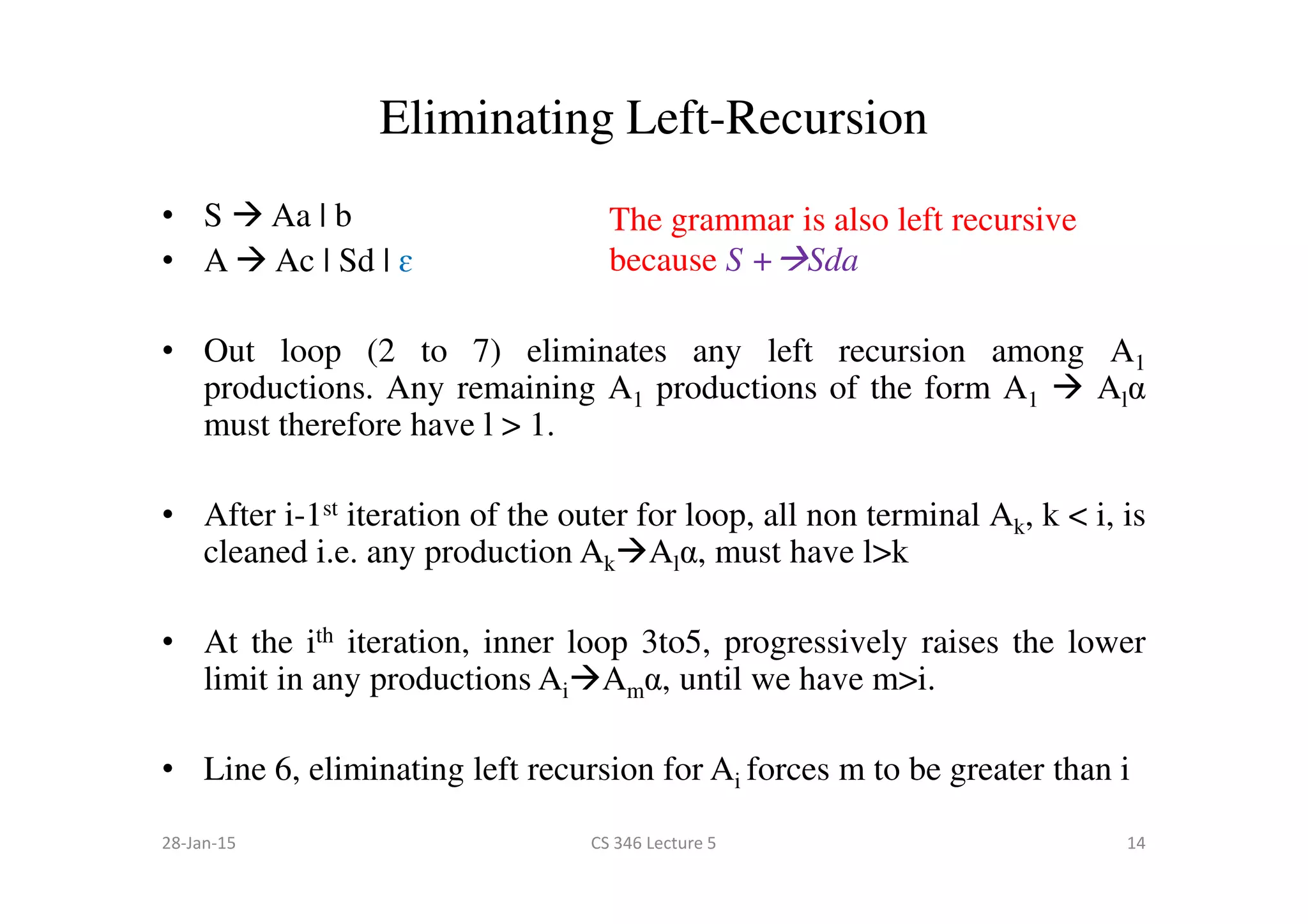Top-down parsing begins with the root symbol and uses productions to construct the parse tree from the top down. It repeats selecting a production for the current non-terminal and adding symbols to the parse tree until the input is fully parsed or a mismatch requires backtracking. Recursive descent parsing is a type of top-down parsing where each non-terminal's productions are represented by recursive functions attempting productions left-to-right with backtracking. Left recursion in grammars prevents recursive descent parsing from terminating, so left-recursive productions must be eliminated before using this approach.
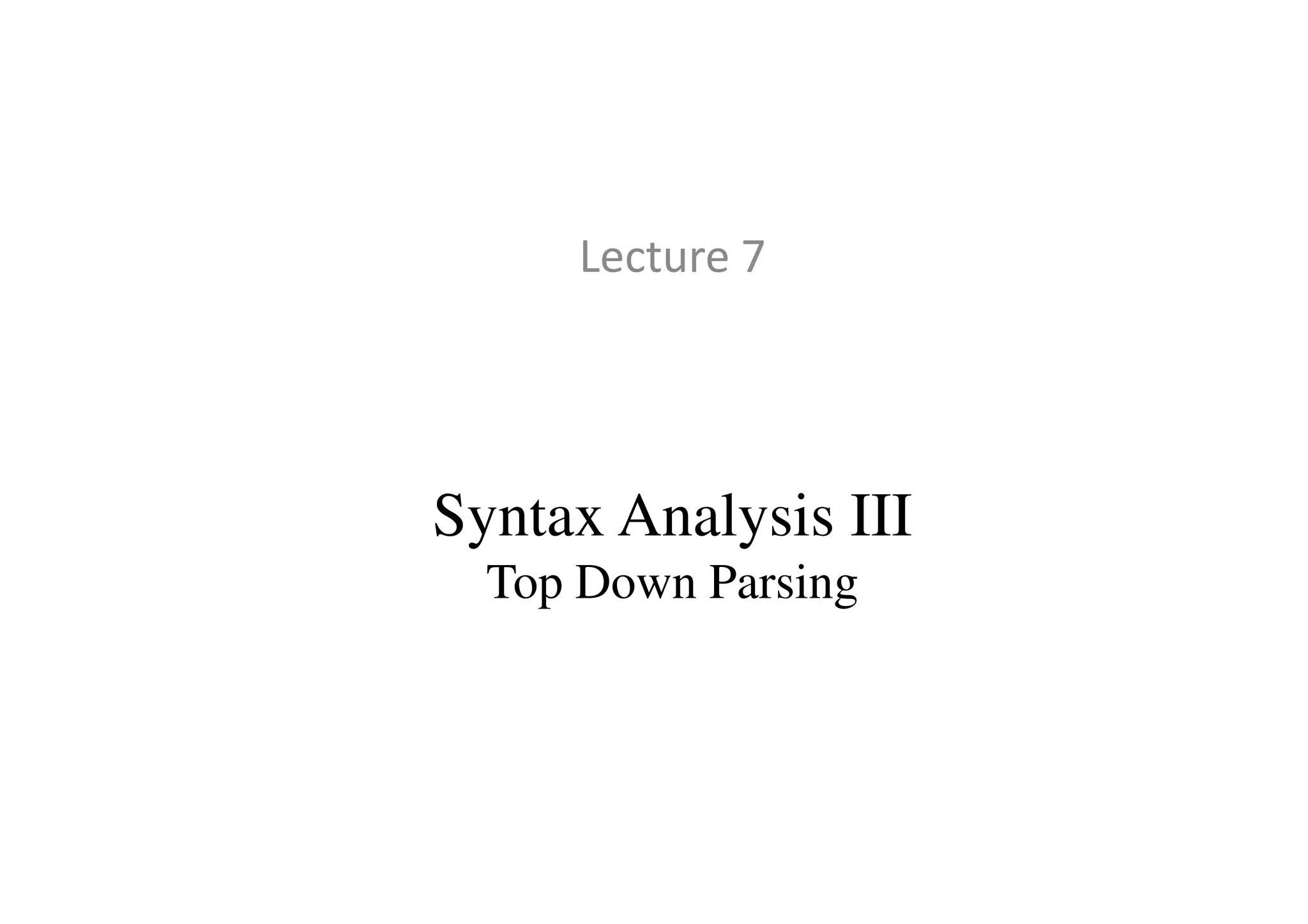
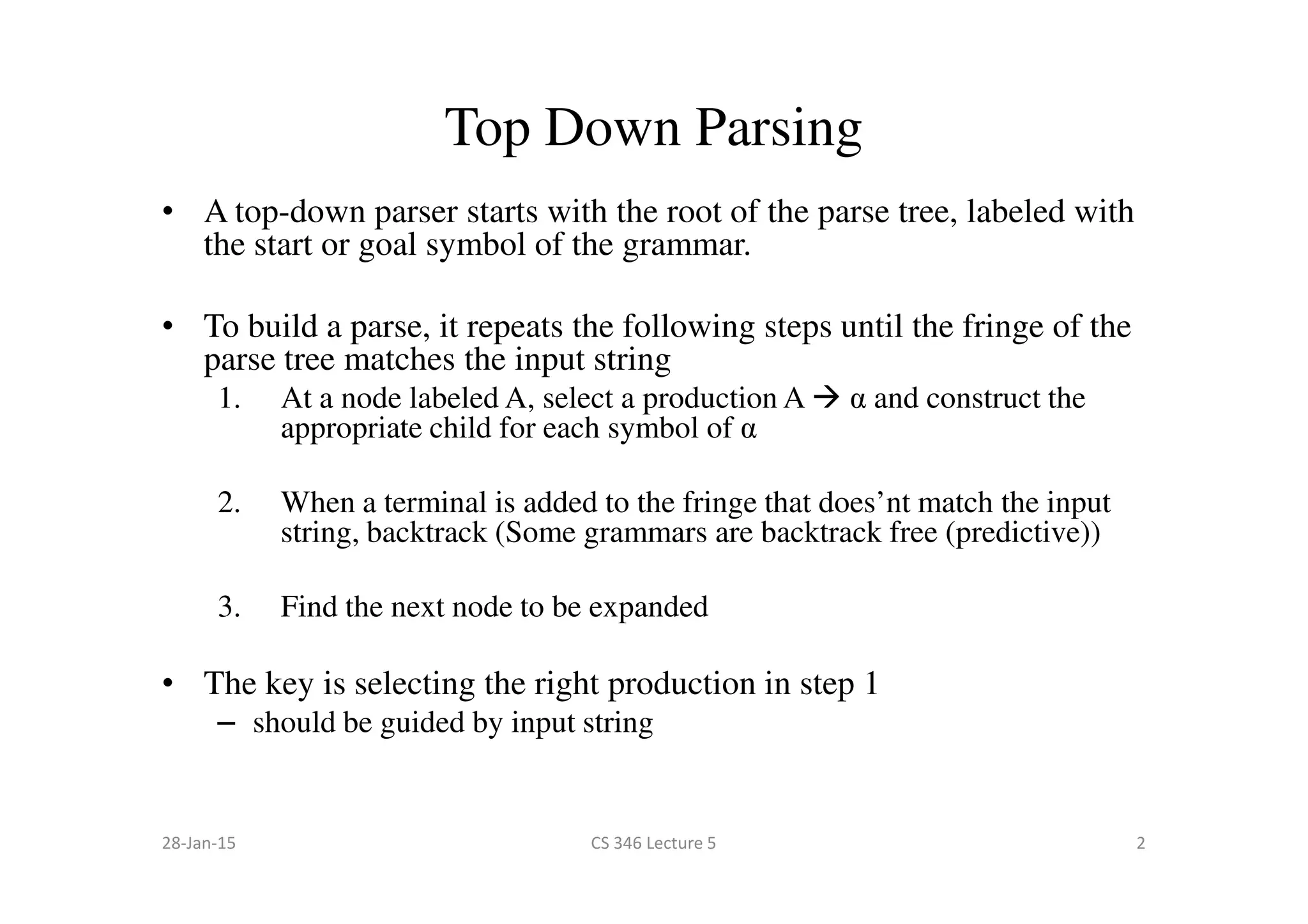
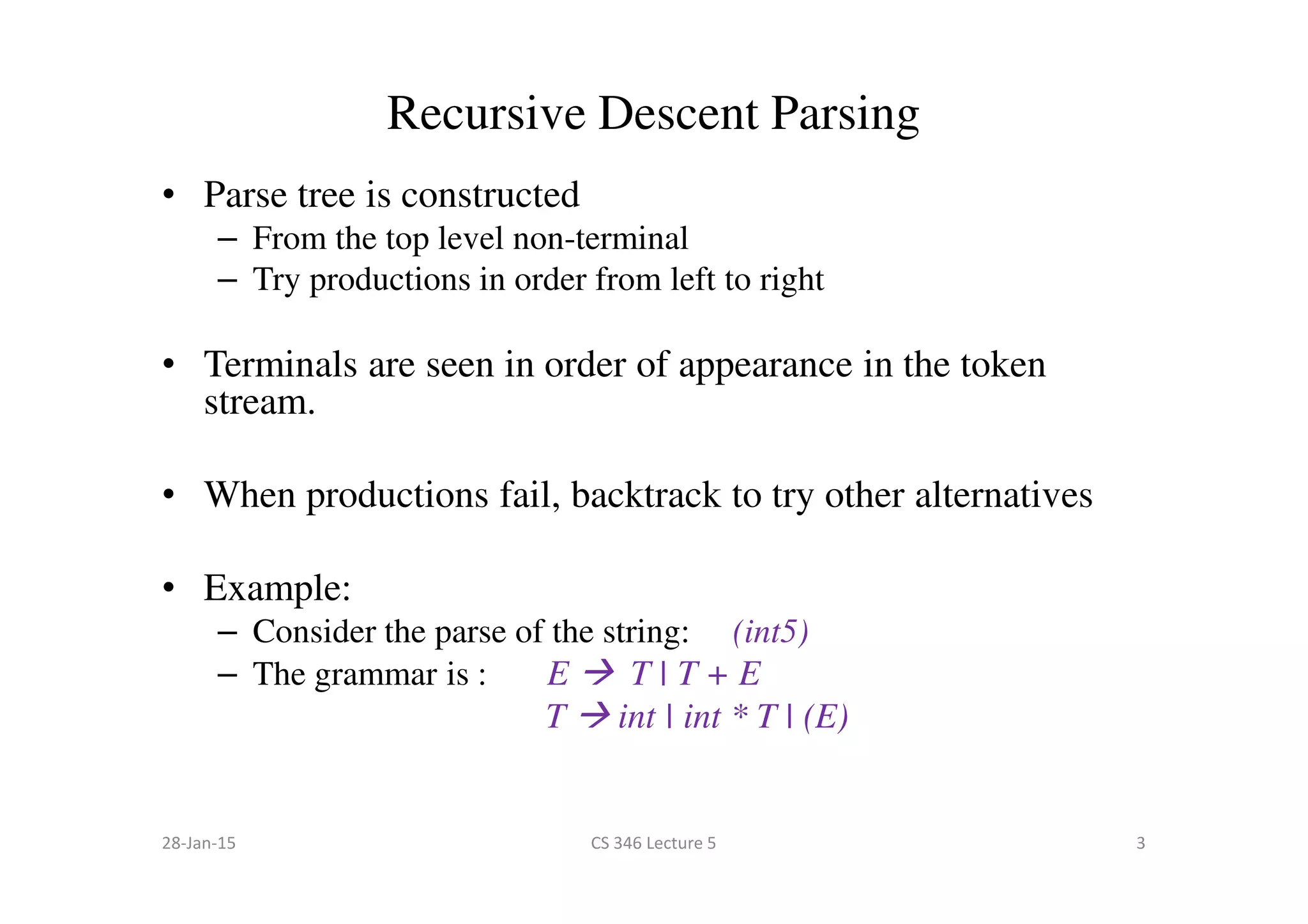
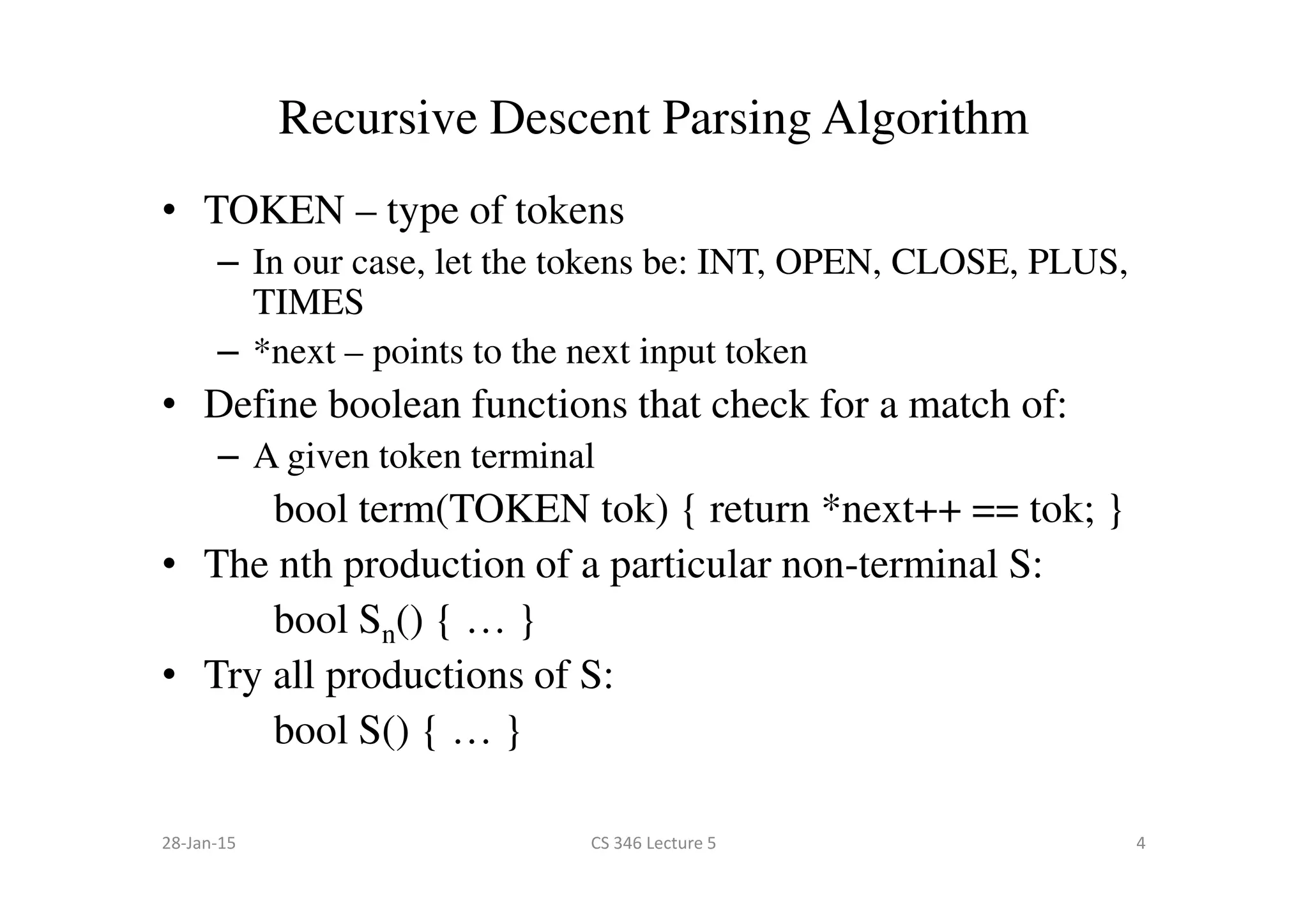
![Recursive Descent Parsing Algorithm • For production E T bool E1() { return T(); } • For production E T + E bool E2() { return T() && term(PLUS) && E(); } Functions for non-terminal ‘E’ [E T | T + E] • For all productions of E (with backtracking) bool E() { TOKEN *save = next; return (next = save, E1()) || (next = save, E2()); } 28-Jan-15 5CS 346 Lecture 5](https://image.slidesharecdn.com/lecture7syntaxanalysis3-170303063027/75/Lecture7-syntax-analysis_3-5-2048.jpg)
![• Functions for non-terminal T : [T int | int * T | (E)] – bool T1() { return term(INT); } – bool T2() { return term(INT) && term(TIMES) && T(); } – bool T3() { return term(OPEN) && E() && term(CLOSE); } Recursive Descent Parsing Algorithm • bool T() { TOKEN *save = next; return (next = save, T1()) || (next = save, T2()) || (next = save, T3()); } 28-Jan-15 6CS 346 Lecture 5](https://image.slidesharecdn.com/lecture7syntaxanalysis3-170303063027/75/Lecture7-syntax-analysis_3-6-2048.jpg)
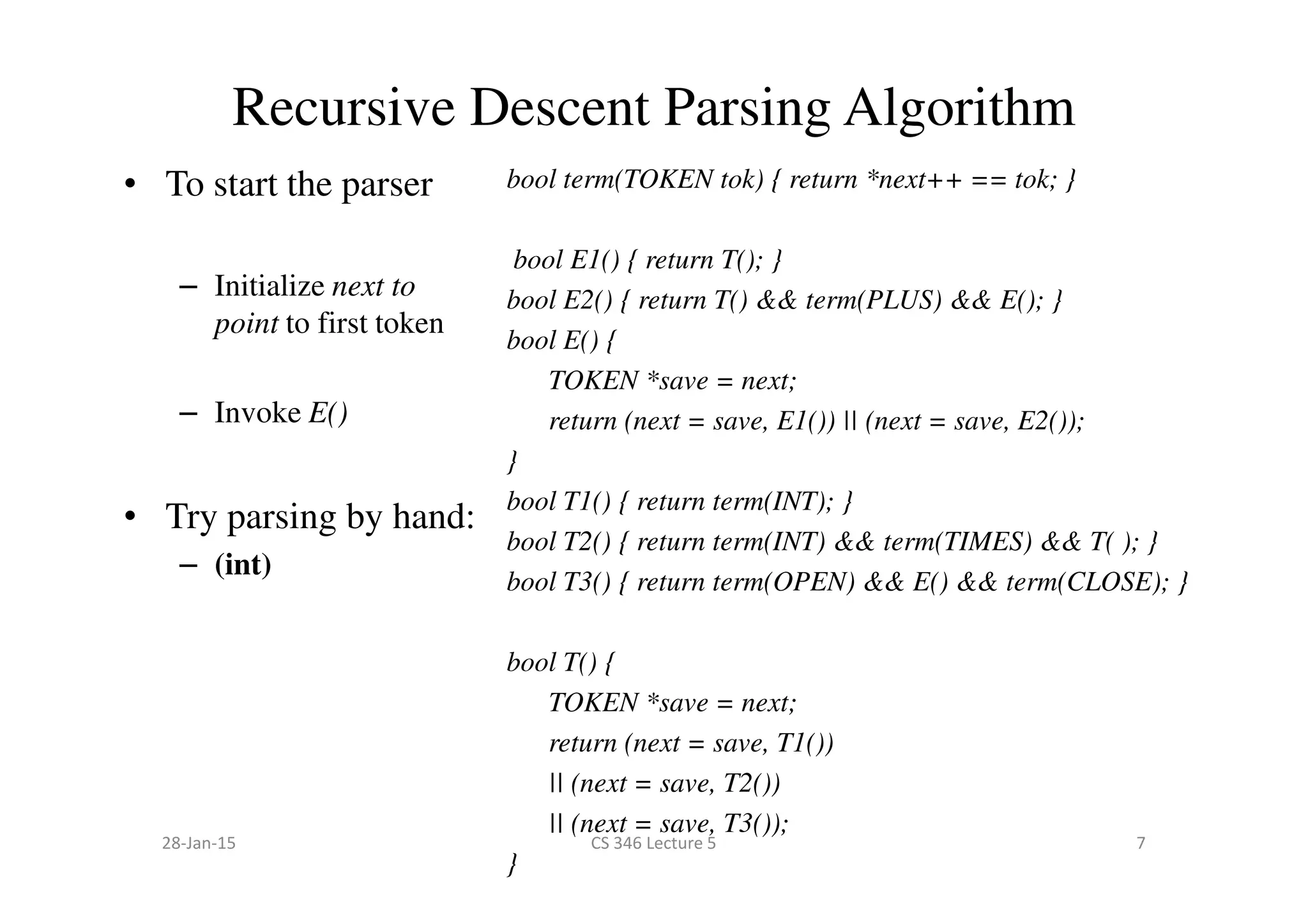
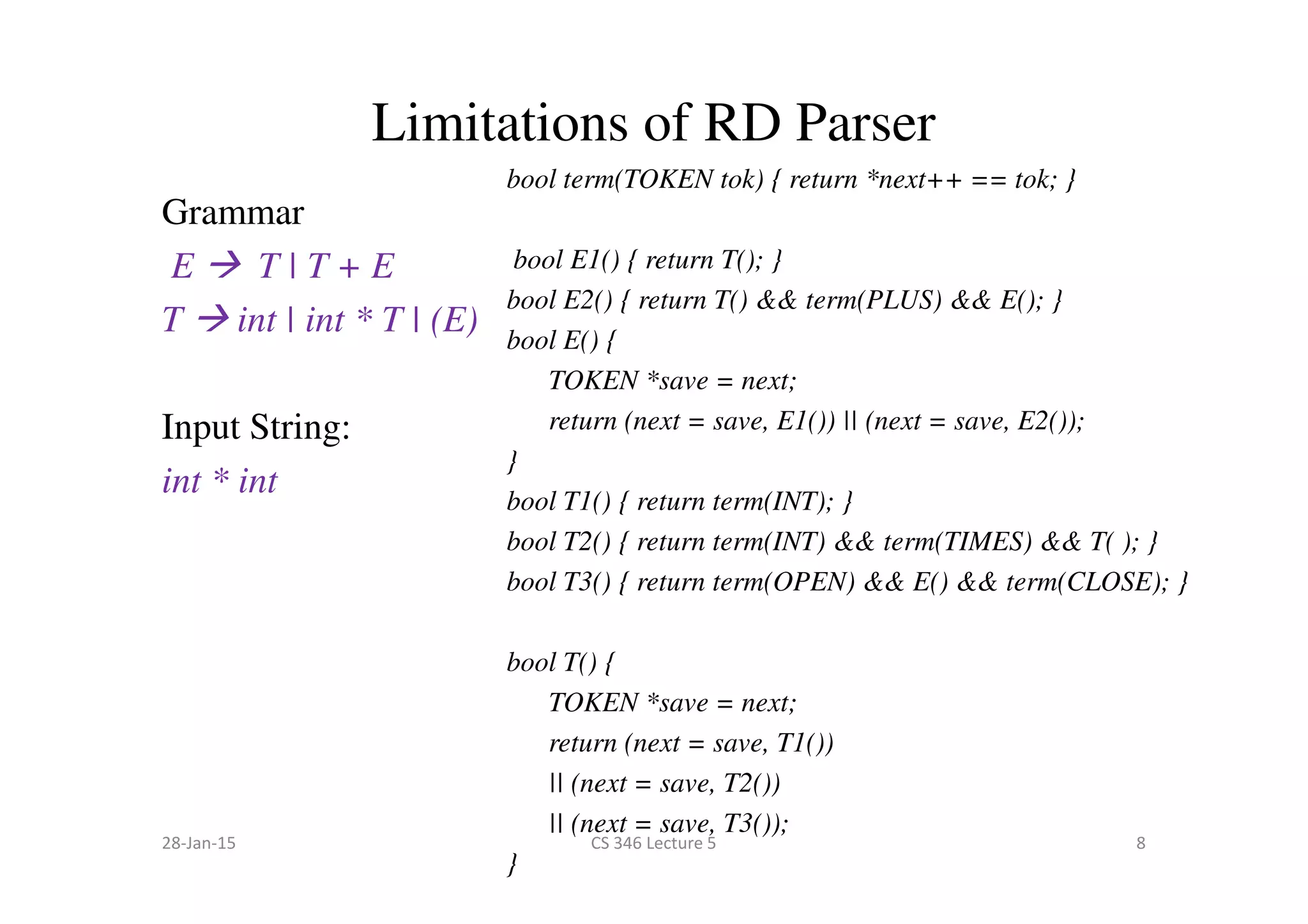
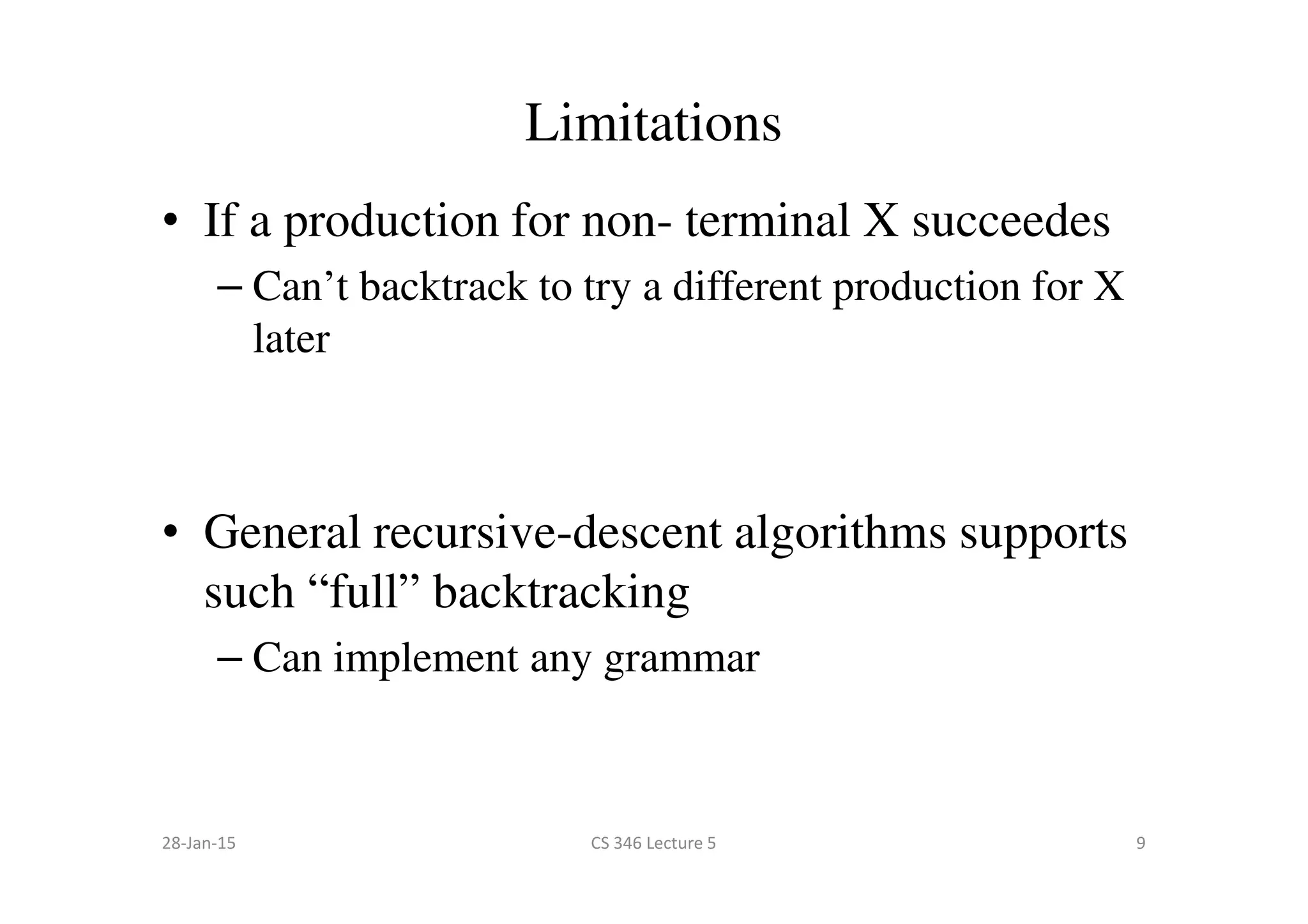
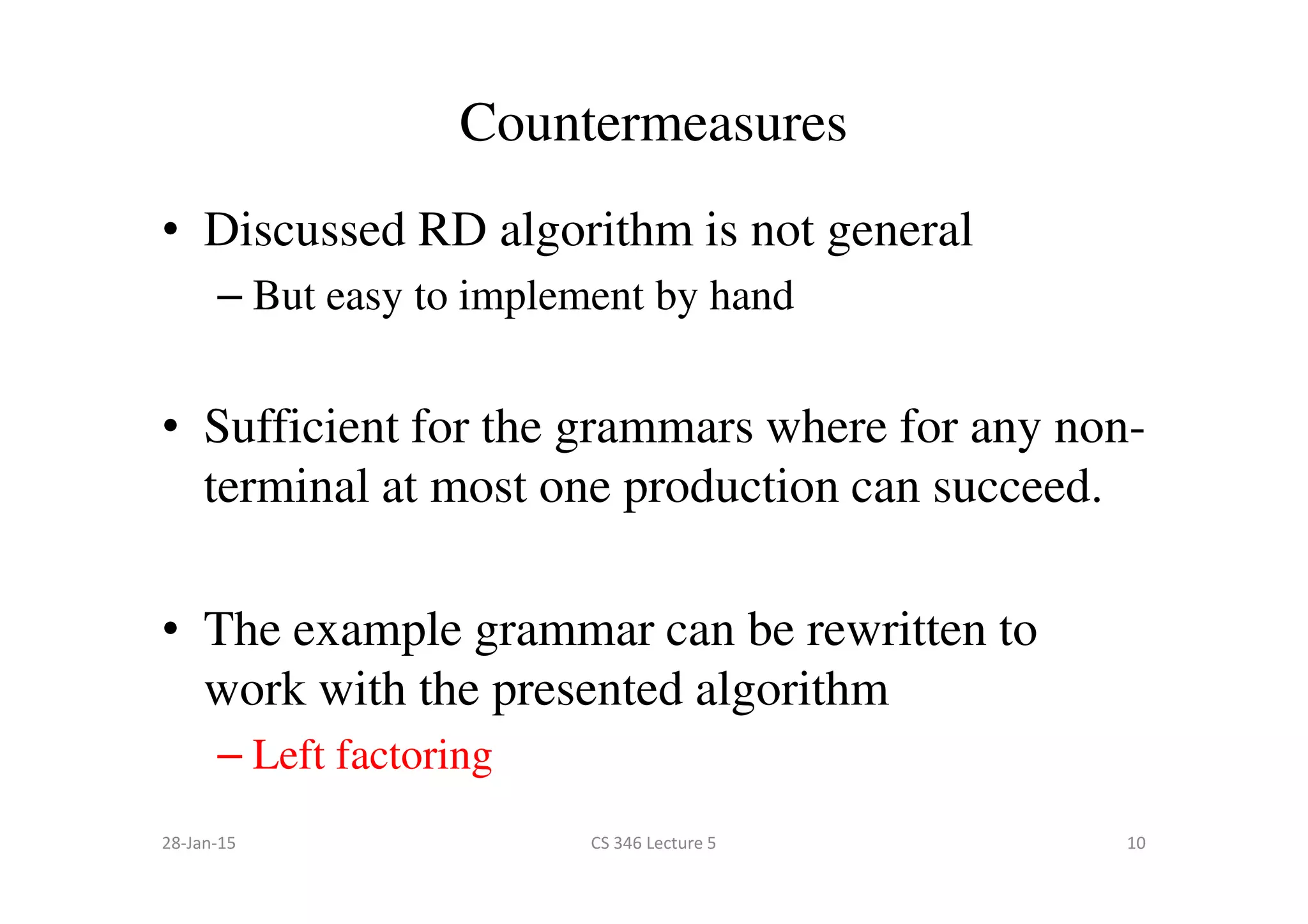
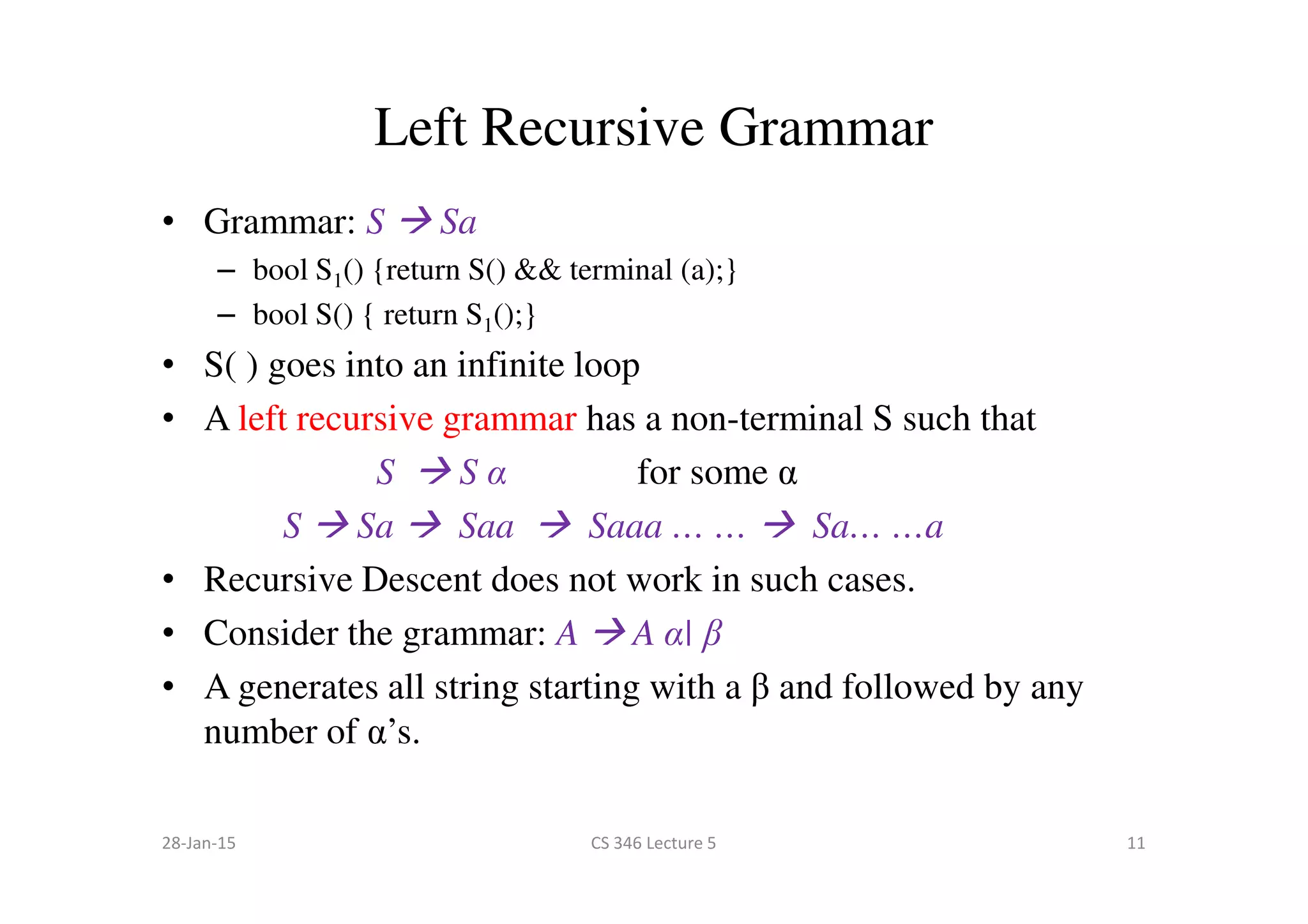
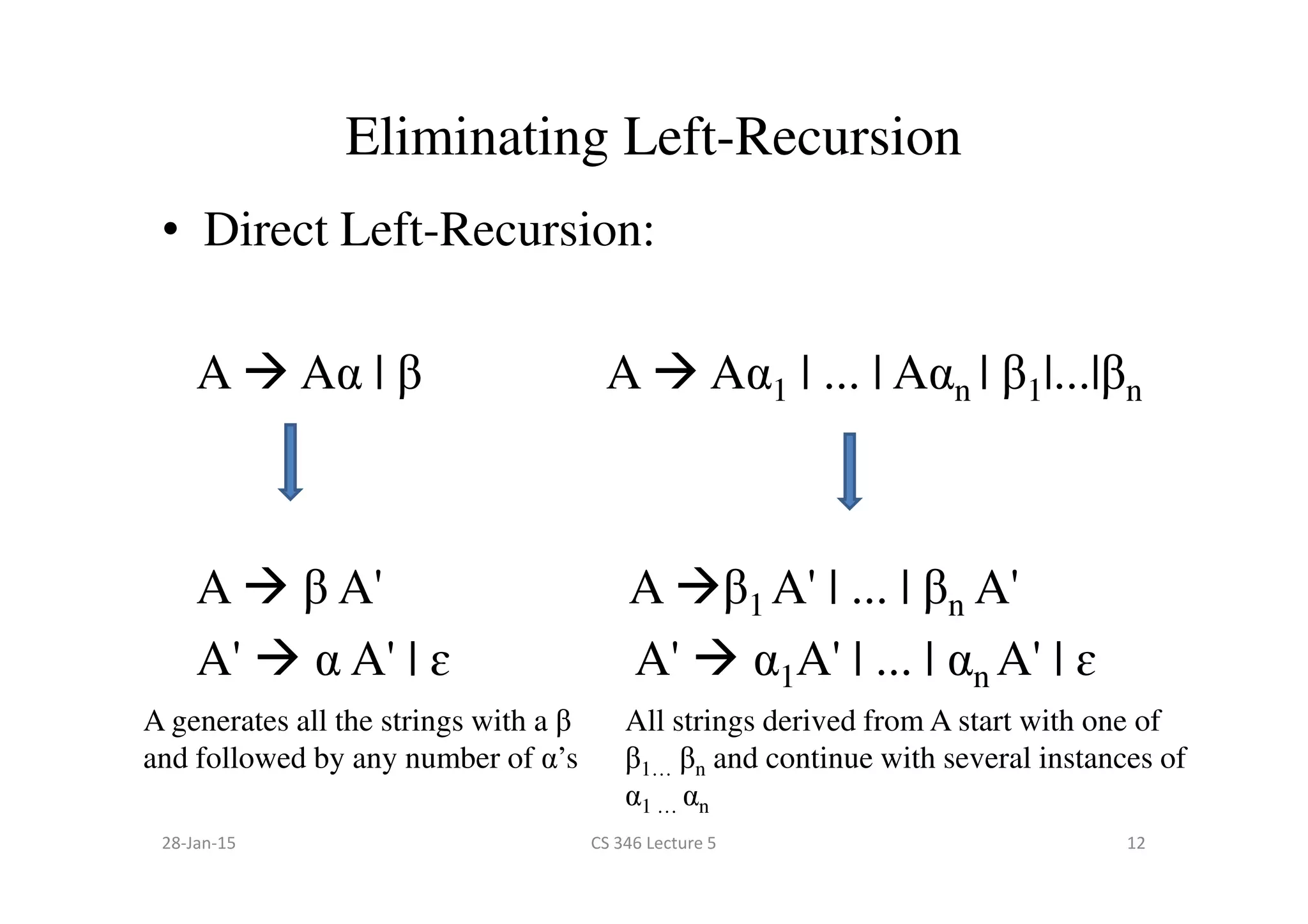
![• Indirect Left-Recursion S A α | δ A Sβ • Algorithm: 1. Arrange the non-terminals in some order A1 ,...,An 2. for (i in 1..n) { 3. for (j in 1..i-1) { Eliminating Left-Recursion The grammar is also left recursive because S + S β α 3. for (j in 1..i-1) { 4. replace each production of the form Ai Ajγ by the productions Ai δ1γ | δ2γ |... | δkγ where Aj δ1 | δ2 |... | δk 5. } 6. eliminate the immediate left recursion among Ai productions 7. } The above algorithm guaranteed to work if the grammar has no cycle [derivation of the form A+ A or ɛ production A ɛ]. Cycles can be eliminated systematically from a grammar as can ɛ productions. 28-Jan-15 13CS 346 Lecture 5](https://image.slidesharecdn.com/lecture7syntaxanalysis3-170303063027/75/Lecture7-syntax-analysis_3-13-2048.jpg)
